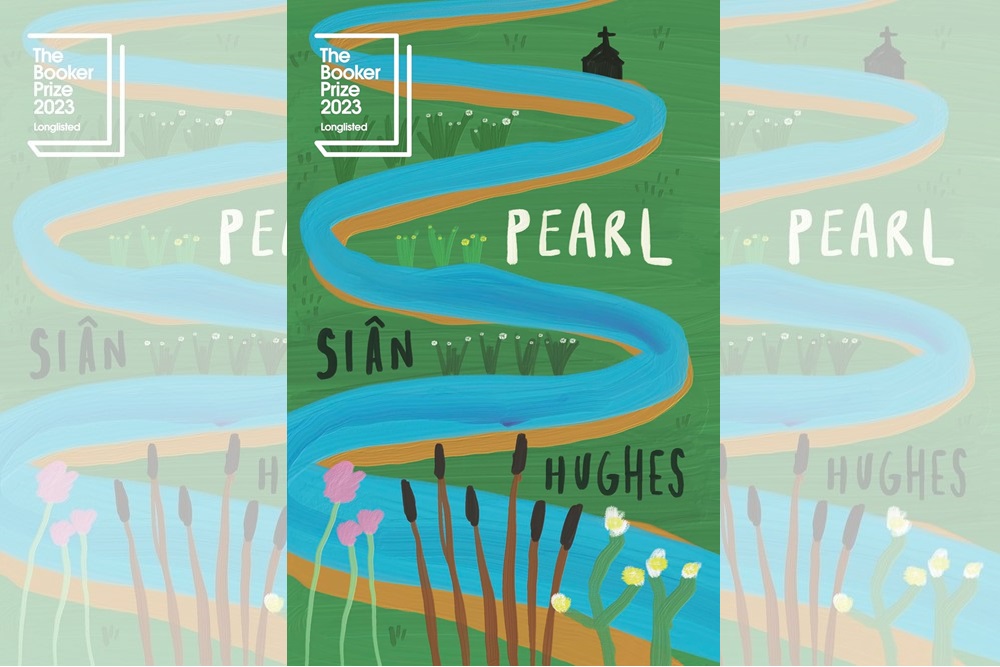Book review: Pearl by Siân Hughes

Myfanwy Alexander
Acclaimed poet Sîan Hughes has written a novel and you need to read it. It is a story as quiet and deep as the pools of water which feature so prominently in the narrative: its universal themes will resonate like the ripples from a casually-thrown stone.
The novel takes its inspiration from the 14thCentury poem of the same name and shares both the setting and the theme of loss. It is moving without histrionics and combines an immediacy of language with lyricism.
This story comes from somewhere and the evocation of place is lapidary; Hughes sets each detail in its perfect location with a precision which creates the illusion that this is not fiction but recollection.
Indeed, a day after finishing Pearl, I found myself struggling to remember that this was a novel, not a story told to me by a troubled friend.
Grief
Narrated by Marianne, who literally lost her mother when she was eight years old, Pearl is primarily about grief. As I read, I was reminded of the fact that no less than one quarter of the school pupils who run into trouble with the authorities are recently bereaved.
Marianne’s loss shatters her world and one of the myriad ways in which Hughes captivates her reader is by creating so vivid a picture of the flawed Eden of early childhood that its ending is axiomatically traumatic.
Piecing together the truth about her parents’ marriage, her mother’s mental health and numerous other secrets, Marianne is always seeing fragments clearly: the whole book is her pursuit of the always elusive complete picture.
Dislocation
As often happens in those flawed and complex organizations we call families, one dislocation lead inexorably to another: the threads of Marianne’s life turn out to be woven together so loosely that disintegration is inevitable after that first shock.
The metaphor of unravelling is deftly employed: the jumper knitted with such love becomes a source of difference and mockery, the beads carefully sewn to decorate the cuffs are ritualistically swallowed in groups of nine.
Bead-swallowing is one of the earliest of Marianne’s pathological behaviours as she scrabbles about for form, meaning and comfort in the howling wilderness of her world.
So detailed a portrait of so damaged a child might tip towards either sentiment or misery memoir but Hughes keeps us engaged with the tantalizing hope of redemption.
The blaze of Marianne’s experience throws shadows in which the other characters remain but the flickering glimpses are always so well-drawn that the reader has full confidence that each has their depth and hinterland.
Hughes can be unsparing in her depiction of human weakness and there are Dickensian flourishes to be savoured: the dolly-mixture scented home help in her yellow jumper full of static was just one of minor characters given full life.
Organic decay
Hughes wrote the book after returning to life in the village in which she grew up and the sense of place viewed from both an adult’s and a child’s perspective is finely balanced: the young Marianne does not fail to understand her home area but simply develops another lens through which the familiar, seen again, becomes freshly understood.
The first home is seen as a very much an integral part of its surroundings, its decay organic as well as sad whereas the more convenient replacement dwelling is unendurable:
‘Along the curve of the driveway were orange plastic flower pots full of dead stalks. The previous owners had tacked a porch over the front door with handrails along the words. The bell played a desperately sad little tinny tune.’
I don’t think a house has been described with such unsparing gloom since Charles Ryder returned to Brideshead during the War but there is no sanctuary lamp for Marianne.
Hughes is excoriating about the banal and, like her protagonist prefers the Gothic to the suburban but she is too sharp a stylist to stumble over stale tropes.
Like the child, we are enchanted by the blend of nature and traditon but this is no folk horror shocker: secrets are sad not gory and there is a merciful absence of pagan hokum.
Vivid, haunting and a deeply satisfying read, buy two copies of Pearl, one for yourself and one for the person in your life most deeply appreciative of beauty.
Pearl by Siân Hughes is published by Indigo Press and is available from all good bookshops.
Support our Nation today
For the price of a cup of coffee a month you can help us create an independent, not-for-profit, national news service for the people of Wales, by the people of Wales.






